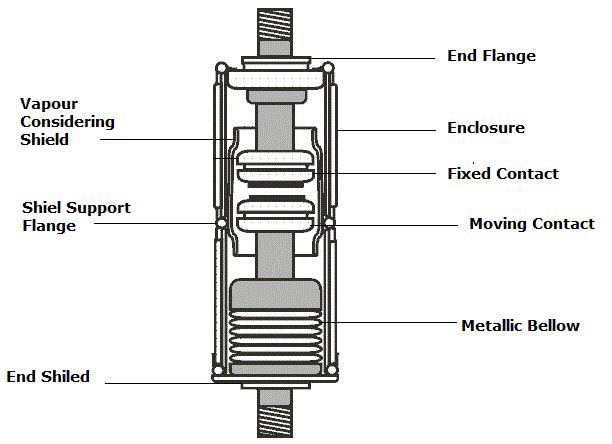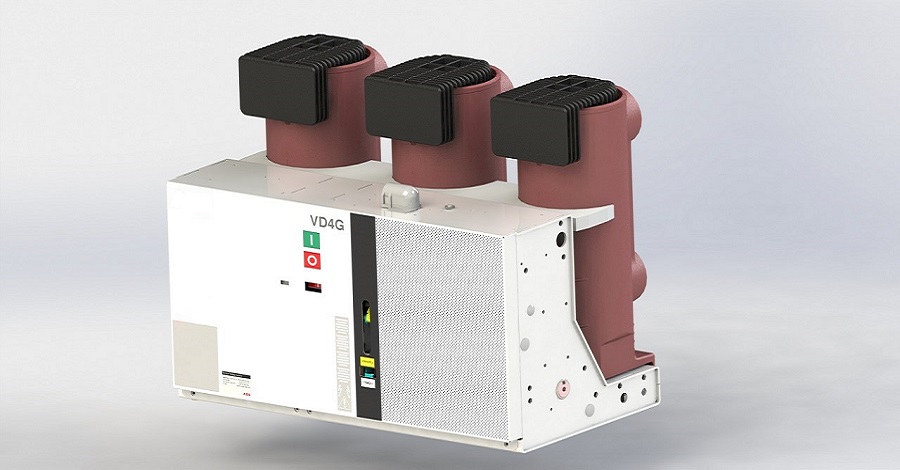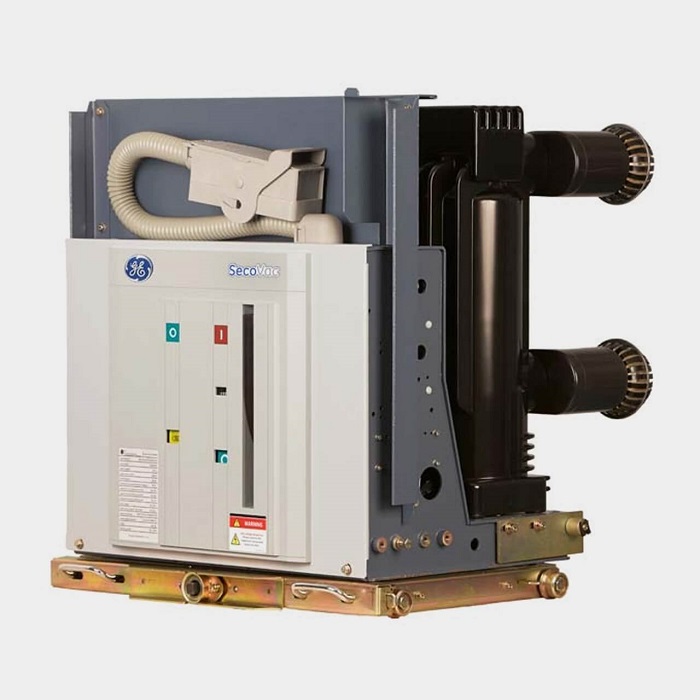A circuit breaker is a switching device that can be operated manually or automatically for controlling and protecting the electrical power system. Vacuum Circuit Breakers use vacuum as the interrupting medium due to its high dielectric and diffusive properties. Read this new blog in Linquip to know more about this type of circuit breaker and Its applications.
Linquip’s website offers a lot of information regarding circuit breakers, and you will find all you need about them here. We have experts at Linquip who specialize in electrical power transmission, and they are available to assist you with any questions that you might have concerning this field. Please read Linquip’s article titled “What Is Circuit Breaker?” before proceeding so that you are familiar with the concept of circuit breakers.
As a Linquip Expert, you will have access to a wealth of benefits that Linquip has to offer. What would you think of writing a Guest Post on Linquip? It is possible to submit your content to the Linquip platform as a guest if you wish to do that.
What is Vacuum Circuit Breakers?
Vacuum circuit breakers are compactly designed for safe operation, high reliability, and easy maintenance, and find a use for various types of high voltage circuits. They interrupt an electric circuit to prevent unwarranted current, caused by a short-circuit, typically resulting from an overload.
There are mainly five types of circuit breakers, generally used as protective equipment of high voltage system:
- Oil Circuit breaker (OCB)
- Minimum Oil Circuit breaker (MOCB)
- Vacuum Circuit Breaker (VCB)
- SF6 Circuit Breaker, and
- Air Circuit Breaker (ACB)
Advantage of this type over others of circuit breakers are:
- In comparison to other types, it is a superior dielectric medium.
- Its service life is much longer, compared to other types, and also they need bare minimum maintenance.
- It is more efficient, very compact, and cost-effective.
Vacuum Circuit Breaker Features
Vacuum circuit breakers have mainly two remarkable properties:
In comparison to various other insulating media used in the circuit breaker, It is a superior dielectric medium. It is better than all other media except air and SF6, which apply at high pressure.
When an arc is opened by moving apart from the contacts in a vacuum, an interruption occurs at the first current zero. With the arc interruption, their dielectric strength increases up to a rate of thousands of times as compared to other breakers.
Vacuum Circuit Breaker Operation
It is an electrically operated switch. There is no overcurrent devices built-in. The overcurrent protection and control comes from using the current transformer (CT) and protective relays that are mounted in the switchgear assembly. Power supplies from a control source, batteries, or control power transformer external to the breaker assembly.
When a fault occurs in the system, the contacts of the breaker are moved apart, and hence the arc is developed between them. When the current-carrying contacts are pulled apart, the temperature of their connecting parts is very high due to which ionization occurs. As a result of ionization, the contact space which is discharged from the contact material is filled with a vapor of positive ions.
The density of vapor depends on the current in the arcing. Due to the decreasing mode of current wave rate of release of vapor fall, and after the current zero, the medium regains its dielectric power provided vapor density around the contacts reduced. Hence, the arc does not restrike again because the metal vapor is quickly removed from the contact zone.

The actual application of the vacuum circuit breaker rating depends on the CT ratio and the relay settings.
Advantages of Vacuum Circuit Breaker
Since the advent of vacuum circuit breakers in the early 1960s, the technical parameters of vacuum circuit breakers have been continuously improved, with excellent performance and outstanding performance. The advantages developed fast, and the application in high-voltage switch cabinets has become more and more extensive.
- It has a small operating mechanism, small size, and lightweight.
- The control power is small, and the action noise is low during switch operation.
- The contact head classifies into a completely sealed structure, and its performance is not going to decline by the influence of moisture, dust, harmful gases, etc. Reliable work, stable on-off performance.
- The ring will not age or need to be replaced. Within the service life, the contact part does not need to be repaired or inspected. Generally, it can be up to about 20 years without inspection. The maintenance workload is small, and the maintenance cost is low, only about 1/20 of the oil-less circuit breaker.
- With multiple reclosing functions, it is suitable for the application requirements of the distribution network.
- The contact gap is little, generally about 10mm, the closing power is low, the mechanism is simple, and the service life is long.
- The arc extinguishing time is short, the arc voltage is low, the arc energy is small, the contact loss is small, and the number of breaking times is numerous.
- The inertia of the movable guide rod is small and can be used frequently.
Disadvantages of Vacuum Circuit Breakers
- The main disadvantage is that it is uneconomical at voltages exceeding 38 KVolt. The cost of the breaker becomes excessive at higher voltages. Besides, production in small quantities is uneconomical.
- The one-time investment price of the product is relatively high, which is mainly determined by the professional production of the vacuum interrupter and the requirements of institutional reliability. If you consider the operation and maintenance costs comprehensively, the price is not high.
- When the inductive load or capacitive load is disconnected, it is easy to cause over-voltage due to current interception, justification, reignition, etc., and don’t forget to adopt corresponding over-voltage protection.
- Since the contact structure of vacuum circuit breakers adopts the butt connection type, and the operating mechanism uses a spring, it is easy to produce closing bounce and opening rebound. Closing bounce will not only end to high over voltages that affect the stable operation of the power grid but also cause contact burn-out or even welding when the capacitor bank generates inrush current and short-circuit closing. Opening bounce will reduce the distance between the contacts after the arc, leading to a breakdown, and the consequences are so significant.
Vacuum Circuit Breaker Applications
The vacuum circuit breaker is today recognized as the most reliable current interruption technology for medium voltage switchgear. It requires minimum maintenance compared to other circuit breaker technologies.
The technology is mainly suitable for mainly medium voltage applications. For higher voltage, vacuum technology grew a lot, but it is not commercially feasible.
Vacuum circuit breakers are used in metal-clad Switchgear and also in porcelain housed circuit breakers. In a country like India, where distances are quite much a lot, and accessibility to remote areas is difficult, the installation of such outdoor, maintenance-free circuit breakers should prove a definite advantage. Vacuum circuit breakers find a use for outdoor applications ranging from 22 kV to 66 kV. Even with the limited rating of say 60 to 100 mega volt-amperes, they are suitable for a majority of applications in rural areas.
- Because of the short gap and excellent recovery of a vacuum circuit breaker, they are beneficial as very high speed making switches in many industrial applications.
- When the voltage is high and the current to be interrupted is little, these breakers have definite superiority over the other breakers.
- For small fault interrupting capacities, the cost is low in comparison to other interrupting devices.
- Because of the least requirements of maintenance, these breakers are very suitable for the system that requires voltage from 11 to 33 kV.
How does an air circuit breaker differ from a vacuum circuit breaker?
There is no use for air circuit breakers in applications with voltages higher than 690 volts. Typically, this type of application is referred to as an LT (low tension) application. The vacuum circuit breakers, on the other hand, are ideal for medium voltages under 33 kV.
So, there you have a detailed description of vacuum circuit breakers and their characteristics. If you enjoyed this article in Linquip, let us know by leaving a reply in the comment section. Is there any question we can help you through? Feel free to sign up on our website to get the most professional advice from our experts.
Download Vacuum Circuit Breakers PDF
This article is available for download in PDF format. You can download it by clicking the link below.
Buy Equipment or Ask for a Service
By using Linquip RFQ Service, you can expect to receive quotations from various suppliers across multiple industries and regions.
Click Here to Request a Quotation From Suppliers and Service Providers
Read More In Linquip
- Types of Electric Circuits: All Classification with Application
- How does a Circuit Breaker Work?
- What is Linear Circuit
- What is RC Circuit?
- What is RLC Circuit
- Types of Resistor: Classification, Application, and Finally Clarification
- What is Parallel Circuit? Definition & Example
- What is Series Circuit? Definition & Example
- What is Closed Circuit? Definition & Example
- What is Short Circuit? A Clear Definition & Protection Guide
- Difference Between Linear and Nonlinear Circuits
- What are the Differences Between Series and Parallel Circuits?
- The 8 Best Circuit Breaker Locators in 2022
- What is LC Circuit? Formula, Equitation & Diagram
- What is Open Circuit? Diagram & Example
- What is Inductive Circuit?
- What is AC Circuit and Its Characterization?
- Circuit Breaker vs Fuse- What are the Main Differences?
- How does a Circuit Breaker Work?
- What is the Equivalent Circuit of Transformer?
- Potentiometer Connection, Working, Circuit Diagram, & Wiring Guide
- Difference Between Relay and Circuit Breaker: Everything You Need to Know
- Difference Between Isolator and Circuit Breaker: Ultimate Guide
- Piezoelectric Transducer and Its Impressive Applications in Electric Circuits
- Types of Circuit Breaker: A Basic Guide to Know Different Classifications





